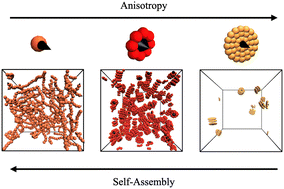The influence of anisotropy on the microstructure and magnetic properties of dipolar nanoplatelet suspensions
Abstract
In recent years, there has been an increasing interest in magnetic nanoparticles with non-spherical shapes. This is largely due to their broad span of tuneable properties, which allow for tailoring of the colloidal properties by altering the magnetic anisometry or shape anisotropy of the nanoparticle. Although extensive research has gone into novel synthesis methods, the theoretical and analytical treatment of magnetic colloidal suspensions still predominantly focuses on spherical particles. This paper explores the microstructure and initial static magnetic susceptibility of systems of anisometric dipolar magnetic nanoplatelets in order to understand the applicability of dipolar sphere-based theories and models for such systems. We find that the microstructure as characterized by the particle distribution and magnetic clustering of platelets diverges significantly from that of spheres both quantitatively and qualitatively. We find lower initial static magnetic susceptibilities in nanoplatelet systems than in comparable suspensions of dipolar spheres. At lower values of the magnetic coupling constant, this can be accounted for by applying corrections to the volume fraction. However, this approach is less accurate for systems with stronger magnetic interactions. By providing predictions of and explanations for the observed effects, we aim to facilitate the use of magnetic nanoplatelet suspensions in the broad range of applications.

- This article is part of the themed collection: 2022 PCCP HOT Articles


 Please wait while we load your content...
Please wait while we load your content...